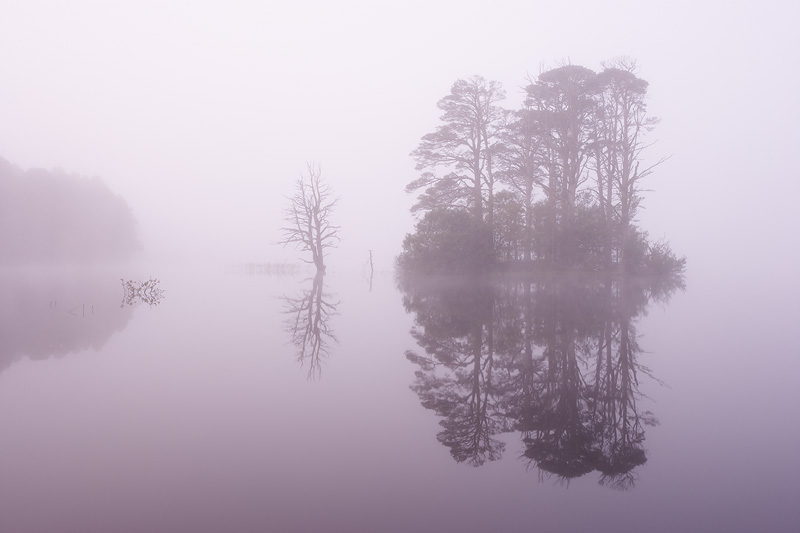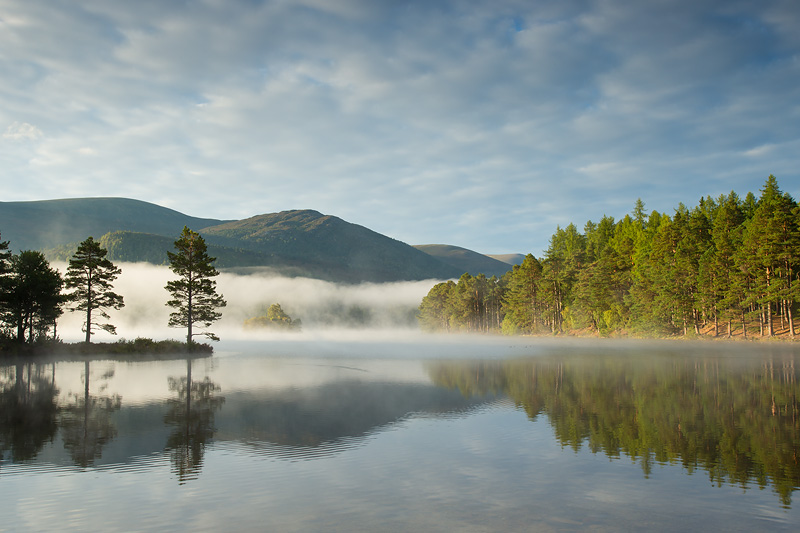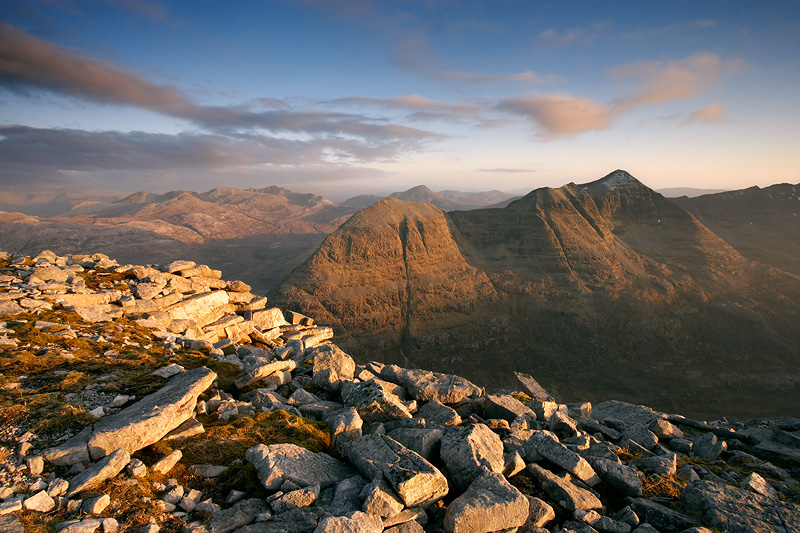10 Ways to Improve Your Landscape Photos

Improve your landscape photographs with these top tips!
1. Shoot During the Golden Hour
Shoot during the golden hour of sunrise and sunset to make your landscapes glow.


Landscape photography is all about working with the prevailing light to create great images, and some of the best light you can encounter is at either end of the day – the so-called ‘golden hours’. When the sun is low in the sky the light has to pass through a thicker layer of atmosphere, filtering out more of the blue light and consequently casts a wonderful, warm red light over the landscape. Most people tend to respond favourably towards warm colours, which is why we are particularly attracted to images taken during these golden hours. By taking advantage of this warm light to shoot landscapes, your images will instantly have greater appeal. The only downside is that you’ll need to get up early and stay out late to catch the low sunlight at its best!
Further Reading: “Making the Most of the ‘Golden Hour’“

Top Tip: Auto white balance can sometimes neutralize the desired warm colour cast produced from low angled sunlight. To avoid this, either set the white balance manually to around 5600 – 6000 Kelvin or shoot in RAW format and adjust the colour temperature using the slider in Adobe Camera RAW during processing.
2. Keep Things Sharp
Employ good photographic technique to ensure your landscapes are pin sharp.
When faced with a great view, it’s easy to start snapping away excitedly without giving the shot the due care and attention it deserves to produce a sharp image. Take time to set the camera up on a tripod. This will slow down your approach, which is no bad thing as it means you can concentrate on optimising all aspects of the shot, including composition. To maximize depth of field for front to back image sharpness, set a small aperture of around f/16. This is especially important when shooting a scene with both foreground and background interest. Also, use a low ISO setting of 100 or 200 for the best image quality. This combination of low ISO and small aperture means that the shutter speed is likely to be quite slow, which is why it’s good to get into the habit of using a tripod.

Top Tip: To eliminate camera shake use a remote release and mirror lock-up. The latter will prevent any internal vibrations caused by ‘mirror slap’, which can be a problem at slow shutter speeds. If you don’t have a remote release use the 2 second interval timer instead to prevent any camera shake caused by physically pressing the shutter button.
3. Choose the Right Focal Point
Include an obvious focal point to hold the viewer’s interest and improve composition.
When we look at a photograph, we are usually drawn towards the strongest element within the picture – the focal point. This can be a single feature within the image, such as a tree or building, that stands out from its surroundings and immediately draws attention. On the other hand the focal point can be quite subtle, created by the play of light and shadows on the landscape or a ray of sunlight illuminating only part of the subject. Similarly, colour can be used very effectively to form a point of interest. Strong, warm colours, such as red or yellow, work well when set against cooler blue or green tones. Without a good focal point your images will lack structure and composition. The inclusion of a strong point of interest will help take your landscape images to the next level.

Top Tip: Think about where you place the focal point within the frame. The often quoted ‘Rule of Thirds’ is a well established way of composing your shot by placing the main subject off-centre. Imagine the frame divided into thirds vertically and horizontally, and place the subject on one of the intersections where two lines cross.
4. Use Simple Compositions
Keep compositions simple by avoiding unnecessary clutter and distractions.
Complicated, grand views may look good to us when we stand in awe, camera in hand and ready to capture that magic moment – but they don’t necessarily translate well into a single image. So rather than trying to cram everything into the frame, decide what is the most important single element in the picture and focus on that using other secondary features such as lead in lines and the sky to enhance the image. This may mean changing lenses from an all-consuming wide angle to a standard or short telephoto lens so that you can exclude anything that doesn’t add to the picture. By honing your images down to the bare essentials you’ll find that they become much stronger pictures with greater impact.
Further Reading: “How to Take Landscapes with a Telephoto Lens“

Top Tip: All subjects require good backgrounds to show them off at their best, but don’t let the surroundings overwhelm or dominate the main focal point. Too much sky or uninteresting foreground will mean that the subject becomes dwarfed and it will lose impact. Getting the right proportions of background and subject is fundamental to good composition.
5. Use Filters
Make use of neutral density graduated (ND grad) and polarising filters.
Whilst you may be forgiven for thinking that everything can now be ‘put right’ or enhanced by computer software, there is still a strong case for capturing the image perfectly in the camera. For example, in situations where the sky is much brighter than the land it’s hard to record detail in both light and dark areas of the picture, but by using an ND grad filter the exposure can be controlled so that detail is retained in all parts of the image. The effects of a polarising filter in reducing surface glare and adding punch to your images cannot be replicated using digital imaging, and if there’s one filter that you should have in your kit bag this is the one. They are typically the screw in circular type, but you can also get linear versions that fit into a filter holder.
Further Reading: “The Ultimate Guide to Filters for Landscape Photographers“

Top Tip: Use a polarising filter to reduce haze in the atmosphere, which will make colours more saturated and add punch to the image. Shooting with the sun at right angles to the camera gives the best results, but watch out for uneven polarisation across the picture when shooting with a wide-angle lens.
6. Stay Local
Make the most of what’s on your doorstep by shooting local landscapes.
We all need to take a break from the photographic ‘norm’ now and again and spread our wings to new places, but does it reward you with the great images you were hoping for? Photography trips away from home are a great way to recharge the creative batteries and gain some invaluable experiences, but in photographic terms you are very much playing a game of chance. Without local knowledge, and being subject to adverse weather, you may come home empty-handed. But by concentrating on your local area you stand a much better chance of being in the right place at the right time and therefore capitalising on great conditions.

Top Tip: Acquiring an intimate knowledge of the landscapes you want to photograph will usually lead to a greater proportion of good images. This is much easier when done locally than further afield because you’ll have a better insight into things like when flowers and trees are in bloom, the angle of the sun through the year, and the best time of day to visit.
7. Think of Your Photos as a ‘Story’
A good landscape photograph is like a good story and needs a beginning, a middle and an end.
Think of a landscape as having three components: a foreground, middle ground and background. This can help you to compose your images more effectively. Not all images fall into this simplified way of composition of course, but many do and it’s a very good way to ‘build’ your pictures from front to back. By constructing your images in this way you will begin to instinctively compose your pictures so that the foreground links together with the background elements of the shot. One way to do this is to start with a strong foreground feature and then compose the shot so the eye leads from this to something of interest in the middle distance, and then finally the background. Alternatively, the background may be the most important aspect of the picture, in which case look for foreground and middle interest to compliment, but not overpower, it.
Further Reading: “The Importance of Composition“

Top Tip: This approach to composition tends to work best when using a wide-angle lens in order to include sufficient foreground as well as the background. Just be careful not to shoot too wide as this will reduce the impact of the background features by changing the perspective and making them appear much smaller.
8. Use Lighting to Create Depth
Use side-lighting to create shadows that reveal shape and form and add a sense of depth.
When starting out in photography we’re often told to shoot with the sun coming from over our shoulder, but when it comes to landscape images this is not good advice. The problem is that front lighting makes the landscape appear very flat and two-dimensional. This is because the shadows are falling directly behind the subject and therefore hidden from the camera. By simply re-orientating the camera so that the sunlight is coming in from the side makes all the difference to the appearance of the landscape. Now the shadows are falling across the frame and these help to reveal the shape and form of the features within the landscape, helping to create the illusion of depth in the final image.

Top Tip: The lower the sun’s position in the sky, the longer the shadows and consequently more of the landscape features will be revealed. As a rule of thumb the best time to shoot landscapes is when your own shadow is longer than your height i.e. avoid midday sun and shoot early and late in the day.
9. Be Brave with the Weather
Take a chance on the weather and head out when it’s cloudy.
The weather is often the critical factor when it comes to landscape photography, and whilst blue skies are pleasant they don’t add much excitement to your pictures. What you need is drama: big brooding skies full of intent, or shafts of sunlight breaking through rain clouds. To capture these kinds of exciting images you have to be prepared for failure as well as the distinct possibility of getting wet. The sun may only break through for a few moments, so you have to be in position with your camera set-up and ready to shoot. Often it will involve a long wait and you may only be rewarded on a handful of occasions. But these are never to be repeated moments that only you will capture, and in so doing your images will be unique and full of atmosphere.
Further Reading: “How to Take Great Photos When the Weather is Bad“

Top Tip: Learning to read the clouds will help you to plan your shoot. Look for a clearing sky on the western horizon, as the sun sometimes sneaks under the clouds for just a minute or two before sunset. Windy or showery days are also very good for transient light as the clouds are constantly moving, allowing sunlight to burst through the gaps.
10. You Don’t Always Need Sky
If the sky lacks interest don’t hesitate to cut it out of the picture.
If something isn’t adding to the picture, then don’t include it in the frame. This goes for skies as well. A small amount of a cloudless blue sky is just about acceptable, but if it’s a uniform pale grey then the best option is usually to exclude it altogether. Heavy overcast light may not have the same appeal as sunshine, but it’s actually ideal for shooting many types of landscape images. You just need to re-evaluate your options. Woodland interiors, waterfalls and coastal scenes all work really well in overcast light and in most cases give much better results when shot in soft light rather than in bright sunshine. But insipid skies rarely add much to the picture, so they are best kept to a bare minimum or cut out altogether, thereby adding greater emphasis to the more interesting parts of the landscape.
Further Reading: “6 Tips for Photographing Waterfalls“

Top Tip: Our eyes tend to be drawn or distracted by the brightest part of a scene. Whilst this can be used to your advantage, it can also reduce the impact of other parts of the landscape. Use your hand to shield the sky and you’ll see how the foreground becomes much more intense in colour with far greater impact.





